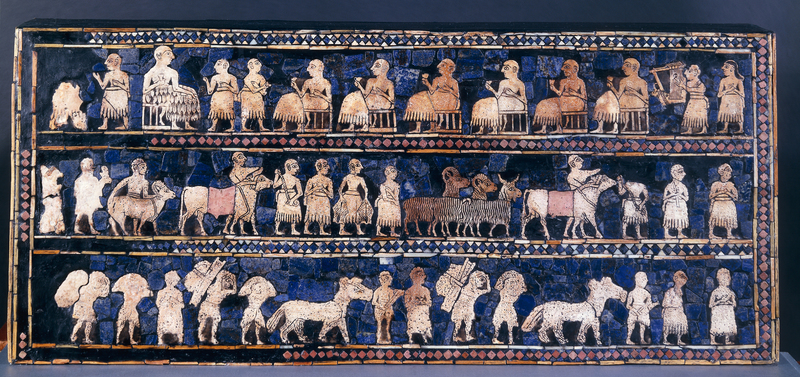Material Construction
Though the depictions reveal fascinating stories about the inner workings of the state, the construction of the Standard is in itself a metric for the societal advancement of the Sumerian state; almost all of the materials used to construct the Standard – shell from the Persian Gulf, red limestone from India and lapis lazuli from Afghanistan – had to have been sourced from other regions through long reaching trade networks, as none of materials are naturally found near Ur or even in Mesopotamia for that matter.
Thus, the use of these materials suggests that 26th Century BCE Ur was advanced enough to send traders to far away locations to retrieve these exotic materials. This type of trade with foreign lands also suggests that the internal organization of Ur was robust enough to allow certain individuals to make excursions of this kind. That is, Ur could afford to send people away from inherently productive roles (agrarian, manual labor, et cetera) to pursue these secondary functions. This evidence of extended trade routes indicates a level of societal sophistication beyond prior understanding.
On a more fundamental level, a state must be at least self-sufficient to even begin trading with other societies. More specifically, this Sumerian state of the Early Dynastic Period must have been producing a surplus with which they would trade for other goods. This production surplus is key to understanding not only trade but also the internal organization of the society, for an agrarian surplus allows some members of the society to focus their efforts on development of religious institutions, technology and formalized bureaucracy.
